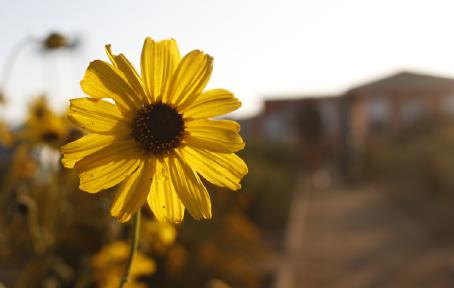
2 minute read
Making a Change From Home: Native Gardens
By Karla González
Editing by Marcela Danemann
Advertisement
In the middle of this year 2021, the United Nations Organization (UN) provided the report on climate change and the irreversible effects that are already occurring. This is already a fact and not at all favorable.
Long ago, the idea of ecosystem restoration stuck in my mind after witnessing an incredible success story within the Colorado River Delta, northeast of Baja California. The delta has suffered a history of drought and indiscriminate logging as a result of different activities for almost eight decades. For more than 20 years, different organizations have dedicated themselves to recovering and restoring ecosystems, returning them to their original state. I had no idea what could be achieved with a good knowledge of native plants and good planning in the short, medium and long term.
After that great learning, being within the city of Ensenada -a city with so much nature, so little understood and that is rapidly being destroyed-, I asked myself: how could we begin restoration within so much concrete? How could we create connectivity between our gray spaces and the countryside, around the city? How can we give wildlife a chance to save itself?
The response was not long coming. In those days, someone asked me for my support to create a space with native plants that would allow them to attract pollinators. As we worked on it, the dream of replicating that work in more places began to grow.

Native bees inside a flower. Photo by Karla González.
Native gardens
A native garden is a space designated for the use of native plants of a certain place with a purpose, whether to attract birds, butterflies or bees; to create shadow, add colors or to appreciate the landscape, or also for children to play.
There is a universe of possibilities from these gardens, it’s a matter of letting your imagination fly. And the most interesting thing is that - regardless of the style you have - you will be contributing to the restoration of our ecosystems and the conservation of native vegetation. vegetation that in the case of our Baja California region, has adapted for thousands of years, which has suffered havoc by the architecture by not considering its presence, which disappears with the activity of land clearing, which is burned with the arson year after year and harassed with unjust illegal looting.
We need to be inclusive with her in all aspects, adopt them in our lives and a great way to start is by incorporating a variety of species in your garden. Global warming is here, but we can reduce its ravages with this restoration strategy, being part of the change from our homes.

California brittlebush, one of the native flowers of Baja California. Photo by Karla González.
Some of the native plants of Baja California
• California poppy (Eschscholzia californica).
• California buckwheat (Eriogonum fasciculatum).
• Fragrance sage (Salvia clevelandii).
• California brittlebush (Encelia californica).
♦ Karla González is an environmentalist and naturalist, she is the founder of Pétalos y Miel. petalosymielblog@gmail.com










